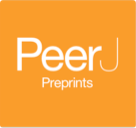A use case centric survey of Blockchain: status quo and future directions
- Published
- Accepted
- Subject Areas
- Cryptography, Distributed and Parallel Computing, Emerging Technologies, Security and Privacy
- Keywords
- blockchain, distributed systems, crypto, cryptography, decentralized, future
- Copyright
- © 2019 Perera et al.
- Licence
- This is an open access article distributed under the terms of the Creative Commons Attribution License, which permits unrestricted use, distribution, reproduction and adaptation in any medium and for any purpose provided that it is properly attributed. For attribution, the original author(s), title, publication source (PeerJ Preprints) and either DOI or URL of the article must be cited.
- Cite this article
- 2019. A use case centric survey of Blockchain: status quo and future directions. PeerJ Preprints 7:e27529v1 https://doi.org/10.7287/peerj.preprints.27529v1
Abstract
This paper presents an assessment of blockchain technology based on the Emerging Technology Analysis Canvas (ETAC) to evaluate the drivers and potential outcomes. The ETAC is a framework to critically analyze emerging technologies.
The assessment finds that blockchain can fundamentally transform the world. It is ready for specific applications in use cases such as digital currency, lightweight financial systems, ledgers, provenance, and disintermediation.
However, Blockchain faces significant technical gaps in other use cases and needs at least 5-10 years to come to full fruition in those spaces. Sustaining the current level of effort (e.g. startups, research) for this period of time may be challenging. We also find that the need and merits of decentralized infrastructures compared to centralized and semi-centralized alternatives is not always clear. Given the risk involved and significant potential returns, we recommend a cautiously optimistic approach to blockchain with the focus on concrete use cases.
The primary contributions of this paper are a use case centric categorization of the blockchain, a detailed discussion on challenges faced by those categories, and an assessment of their future.
Author Comment
This work is part of studies looking at emerging technologies using the methodology defined in Emerging Technology Analysis Canvas (ETAC). This paper identifies ten use case categories of blockchain and then examine the impact, feasibility, risks, and future of each category. It is intended to help someone critically evaluating blockchain (e.g., build a system on top of the blockchain, to build a startup).
